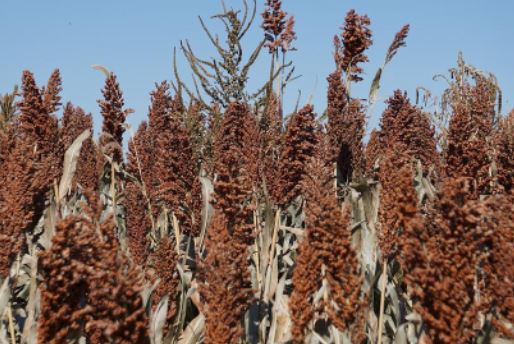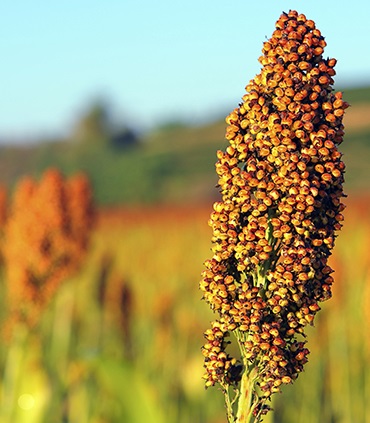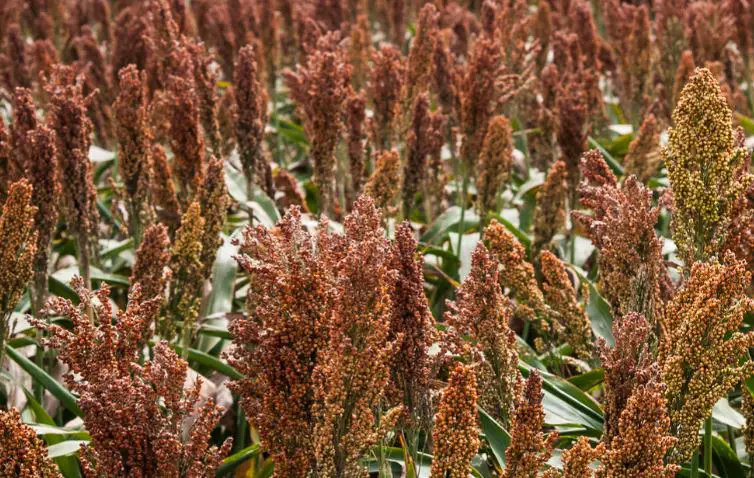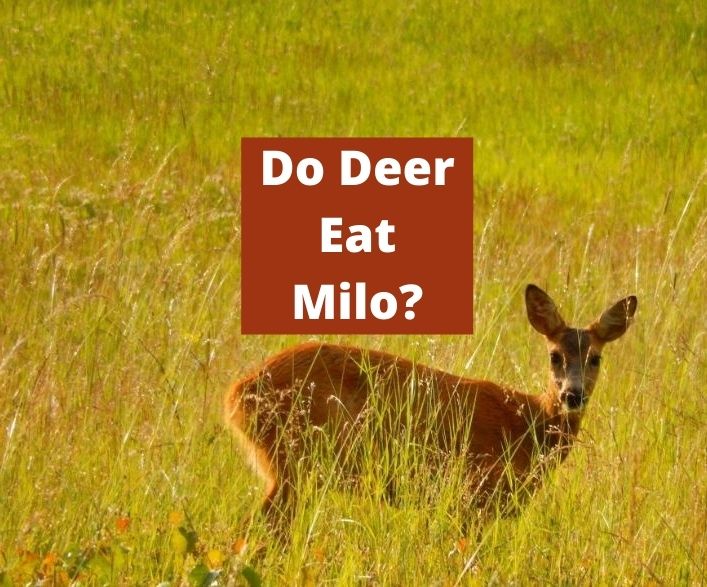There are a lot of myths out there about what deer do and do not eat. One common question is: do deer eat milo?
The answer is yes – deer love to eat milo year-round. Deer are attracted to milo because it’s highly digestible, packed with carbohydrates, and tasty to them.
Many food plotters choose milo over corn to attract deer because it’s easier to grow, is more drought-resistant, and can tolerate a wide variety of soil types.
Considering that a single deer can eat several pounds of plants each day, you can see how deer eating milo can really do some serious damage to your crop!
In this article, we’ll discuss how to stop deer from eating your milo, and keep your field healthy and beautiful all season long.
Why Do Deer Eat Milo?

As we covered, deer will eat as much milo as possible when they’ve got the chance.
But why do they do this?
Deer like plants that contain nutrients they need and are accessible year-round, and milo checks every box.
Milo also contains a lot of digestible fiber which also attracts deer.
Deer can do some serious damage to a large amount of milo plants in a single sitting if they’re hungry enough!
This was confirmed in a 1999 study on deer plant eating habits by Cornell University.
Crops like milo contain water, sugar, protein, and nutrients, which makes them an ideal food source for deer.
And don’t think that your newer milo fields are safe either: deer actually prefer new growth because they’re more tender.
Additionally, deer will consume a wide variety of foods like milo based on opportunity.
In fact, people specifically choose to grow milo for food plots to attract deer.
If you’re not convinced, leave some milo seeds out or plant some, and wait to see what happens!
When Do Deer Eat Milo?

The time of year when deer will hit milo really depends on which part of the country you’re in.
The more nutritional stress deer are under, the more likely they are to eat milo seed heads.
In the deep South, you’ll usually see deer eating milo starting in late summer around August.
In the Midwest and northern climates, deer will start eating milo in mid to late September or October and in the months beyond.
Planting Milo On Deer Food Plots
You can plant milo purposely to attract deer as part of a food plot and will almost certainly see success in this strategy!
Ideally the deer in your area will already be used to having some milo in their diet.
If not, hold off on introducing a high-carb food like milo because it can interrupt their normal food search patterns and make them completely reliant on the milo you’re planting as their new winter food source.
How Do I Keep Deer From Eating My Milo?
Most folks investigating whether deer like milo are trying to find ways attract them.
If you’re in the other camp and want to protect your milo crops from deer, we’ve got some great options for you.
There are a few things to keep in mind when you’re protecting milo from hungry deer: their habits, your scent, repellent options, and when you plant them.
Deer will eat nearly anything if they’re hungry enough, so your main goal is making your garden as least inviting to deer as possible.
Check out our guide on how to keep deer from eating plants where we cover 25 quick and easy tips for keeping hungry deer out of your garden.
Will My Milo Grow Back After Deer Eat Them?
Forage milo (the kind you’ll plant to attract deer) doesn’t regrow following a harvest, so you’ll need to reseed for next year.
Milo-sundangrass, or sundangrass, will grow back each year and can withstand being eaten by deer.
Is Milo Good For Deer?

Most grasses are not good for deer because they’re not very digestible, but milo is an exception.
Feeding deer milo provides them with critical macronutrients like protein, fat, and plenty of carbohydrates, plus some much-needed digestible fiber.
Milo also provides deer with the following vitamins and minerals:
- Potassium
- Vitamin B6
- Magnesium
- Manganese
- Phosphorous
- NIacin
- Thiamine
These vitamins and minerals provide deer with many benefits.
Potassium is great for deer because it helps maintain good pH balance and aid in proper digestion.
Magnesium is great for antler growth, increasing body weight, and has immune system benefits for deer.
Manganese assists deer in growth, respiration, and reproduction.
Fat-Soluble Vitamins For Deer
Vitamins A, D, E, K, and calcium are fat-soluble, so they can be stored in the deer’s fat and liver to be used later as needed.
This means that vitamin K content from deer eating milo can be “stored up” for later use, which is highly beneficial.
Water-Soluble Vitamins For Deer
Vitamin C, B Vitamins, niacin, folic acid, and potassium are all water-soluble, which means they cannot be stored, so they must be replaced continually.
So a deer that eats milo for the potassium content must continue to consume foods that contain these necessary vitamins to stay healthy.
Not to mention, milo contains 1g of protein and 1g of carbs from fiber, all which are beneficial to deer.
Do Deer Eat Milo? Wrapping Things Up
So, do deer eat milo?
The answer is yes, whenever they can!
Deer will eat all the milo they can get, especially during spring when they’re hungry after a long winter and the milo is the most tender.
Have any observations to add to the discussion? Be sure to let us know in the comments below.
Check our our other helpful wildlife guides while you’re here:


